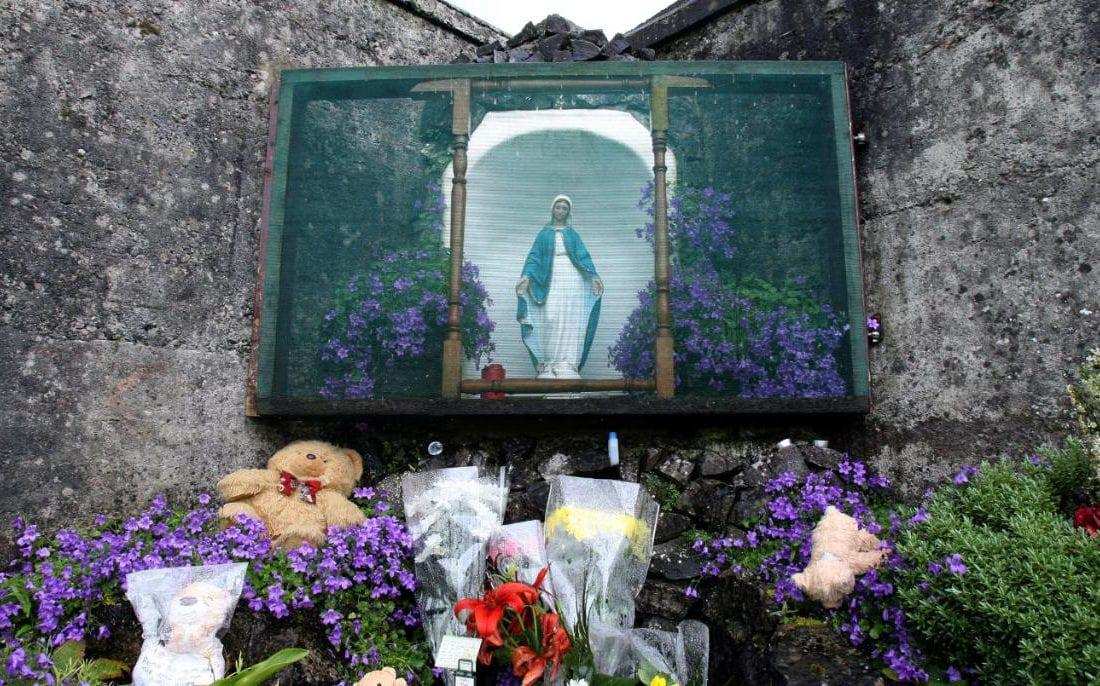|
COMMENT Tuam’s tiny victims had no voice then - which is why we must shout for them now
By Gillian Fitzpatrick
[with video] Joseph Ward was aged just seven months when he died in 1928. Mary Teresa Drury was a year old when she died in 1931. In 1937, Mary Kate Cahill was two weeks old when she died. In 1943, a baby died a day after being born – and is known now simply as Baby McNamara. Vincent Keogh was five months (1947); Patrick Hardiman was six months (1952); Imelda Halloran was two years old (1954); Gerard Connaughton was 11 months (1956), and Dolores Conneely was seven months (1959). These names – as detailed today by TheJournal.ie – make up a mere handful of the 796 babies who died at the Bon Secours Tuam Mothers And Babies home from the 1920s to the 1960s. Close-to 800 tiny, beautiful children who lived short lives, died and were buried without dignity or respect. They were for decades silent, nameless victims – muted by a society that bowed down to Catholic autonomy, and never insisted on State accountability. Significantly, the Bon Secours order of nuns has so far not issued an apology. Drawing on the work of local historian Catherine Corless, in May 2014 the Irish Mail On Sunday published claims that the bodies of multiple children had been buried at the site. Two years ago, a State commission was established to investigate. And this week, the terrible plight of those beautiful babies was confirmed: yesterday, a press conference acknowledged that hundreds of tiny bodies had been over the course of 35 years hidden away – sometimes in a septic tank, sometimes in underground chambers. As has been highlighted much over the last 24 hours or so, those forgotten infants cast a long shadow of utter shame on this country. “Ireland’s genocide,” more than one observation has stated. “A concentration camp,” others have said. Let’s not forget also how their vulnerable mothers, most of whom would now be dead themselves, were stigmatised and ostracised during their own lives. They must have arrived at the doors of the Bon Secours nuns in Tuam not only pregnant, but also desperate and completely terrified. Few, if any, left with their babies. The children were afterwards fostered or adopted. As we know, others died – sometimes as a result of measles, flu, or malnutrition – their bodies then discarded. There are heart-breaking recounts of frantic mothers later trying – and failing – to have their sons and daughters returned to them. The commission’s work, of course, is far from complete. But understandably there is already much talk about what should be ‘done’ by way of some belated retribution for the children of Tuam. There might be, eventually, an apology of sorts made by the Church or by the State. A plaque will be erected; a ceremony held. But we should demand more – because certainly those babies were not given respect during their short lives. It was unlikely, taken from their mothers as they were, that they were given much love either. The same applied in death: no respect, no love. But now we can bestow upon them some tenderness; a day in which the entire nation pauses and reflects on the atrocities that this country once – not so long ago – bore witness to. After all, these were people who now could be in their 50s, 60s, 70s, 80s, and 90s. They could have gone on to have families of their own. Many of them, undoubtedly, would have achieved great things. A national day of mourning is merited, is needed and, indeed, is wanted by the people of Ireland. A day for Vincent, for Joseph, for Mary Kate and Dolores; for Imelda, Mary Teresa, Patrick, Gerard and for Baby McNamara. And for those other 787 children who lived and died anonymously. Then they had no voice; we need to shout for them now.
|
.
Any original material on these pages is copyright © BishopAccountability.org 2004. Reproduce freely with attribution.




